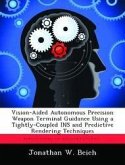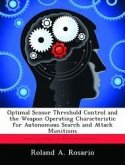With the United States' push towards using unmanned aerial vehicles (UAVs) for more military missions, wide area search theory is being researched to determine the viability of multiple vehicle autonomous searches over the battle area. Previous work includes theoretical development of detection and attack probabilities while taking into account known enemy presence within the search environment. Simulations have been able to transform these theories into code to predict the UAV performance against known numbers of true and false targets. The next step to transitioning these autonomous search algorithms to an operational environment is the experimental testing of these theories through the use of surrogate vehicles, to determine if the guidance and control laws developed can guide the vehicles when operating in search areas with true and false targets. In addition to the challenge of experimental implementation, dynamic scaling must also be considered so that these smaller surrogate vehicles will scale to full size UAVs performing searches in real world scenarios. This research demonstrates the ability of a given sensor to use a basic ATR algorithm to identify targets in a search area based on its size and color. With this ability, the system's target thresholds can also be altered to mimic real world UAV sensor performance. It also builds on previous dynamic scaling studies to show that the performance of a full size UAV can be imitated using a surrogate vehicle. Further investigation will show sensor orientation, field of view, vehicle geometry, and the known size of the target can be used to determine target pixel thresholds as well as the vehicle steering correction angle to navigate directly over the centroid of an identified target.
Hinweis: Dieser Artikel kann nur an eine deutsche Lieferadresse ausgeliefert werden.
Hinweis: Dieser Artikel kann nur an eine deutsche Lieferadresse ausgeliefert werden.








